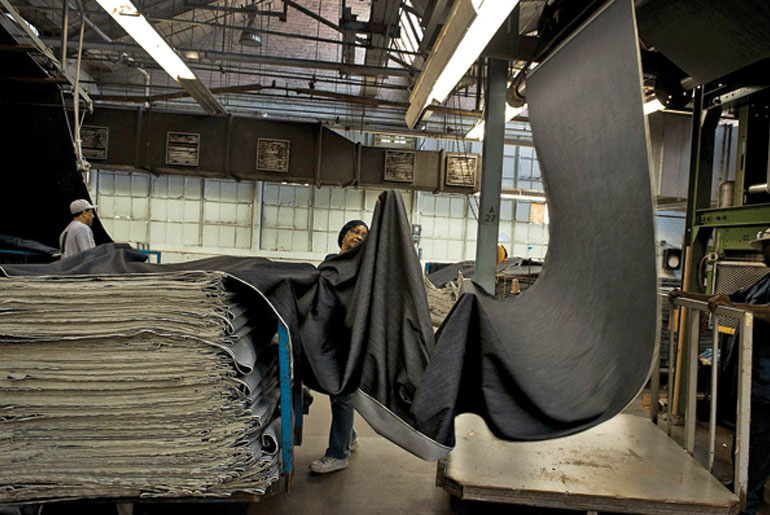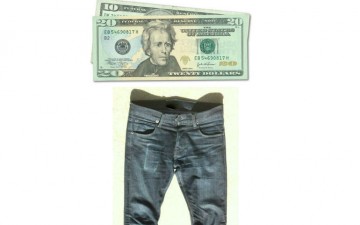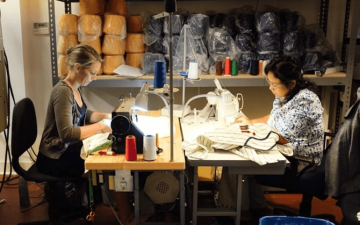We don’t often get into politics here at RD, but like the fabric produced at the Cone Mills White Oak Plant above, the artisanal denim and clothing movement is almost inextricably tied into first world manufacturing. Many of the companies we write about are small operations that produce their goods in the United States, Canada, or Japan when labor in those countries is incredibly expensive. Well a new international trade deal could make it much worse.
While most media outlets have been obsessing over the color of a dress (it’s blue and black, get over it), the Obama administration has quietly started fast-tracking the largest international trade agreement since NAFTA. The Trans-Pacific Partnership (TPP) has been in development since the late 2000s and, among many other things, would greatly reduce tariffs and import duties between twelve Pacific and Asian nations (specifically the United States, Australia, Brunei, Chile, Malaysia, Mexico, New Zealand, Canada, Peru, Singapore, Vietnam, and Japan).
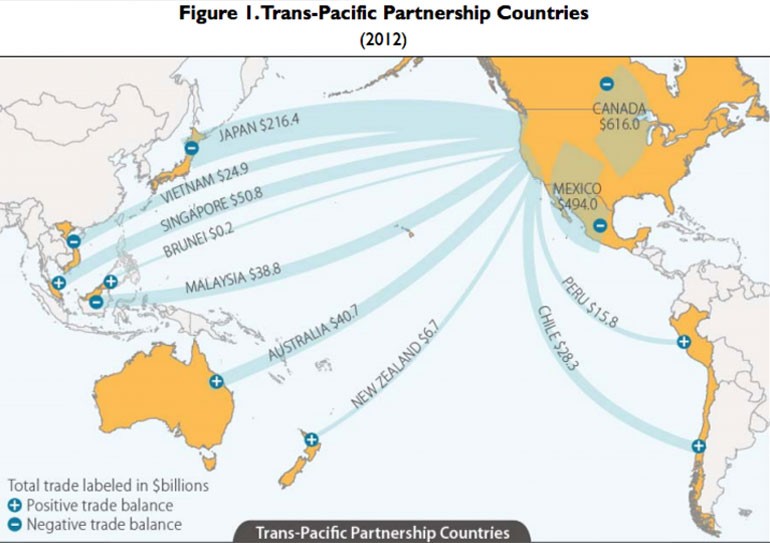
Image via Washington Post
You might be wondering, what does this have to do with jeans? Well have you ever wondered why your made in USA denim is so much more expensive than the stuff made half a world away? Get ready for some seriously over-simplified economics!
The cost of living in the United States is much higher than it is in developing nations. Companies producing in the US have to pay their workers a much higher wage and thus charge much more for the goods they produce. Many companies would seek cheaper work abroad, but the United States penalizes goods imported from other countries with tariffs and import fees, which inflate the prices on foreign goods so the domestically produced equivalent can remain competitive. At least that was the way it worked until the mid 1990s.
In 1994 the North American Free Trade Alliance (NAFTA) greatly reduced or eliminated many of the import fees and tariffs between Canada, the United States, and Mexico. This kind of agreement can be a boon to everyone if the economies involved are on relatively equal footing, but the Mexican economy collapsed shortly after NAFTA went into effect and their exports suddenly became much, much cheaper.
It’s estimated that some 700,000 United States manufacturing jobs moved to Mexico between 1993 and 2011. Some of those jobs were with American denim companies like Levi’s, Wrangler, and Lee–none of whom currently own domestic production facilities.
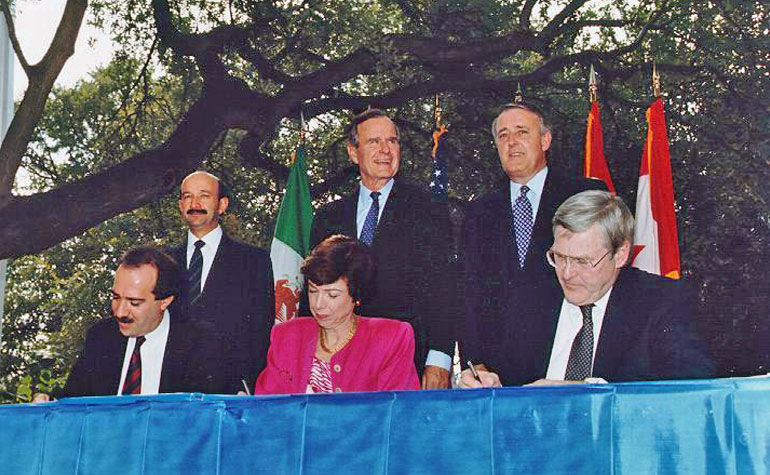
President George H.W. Bush presiding over the NAFTA initialing ceremony in 1992.
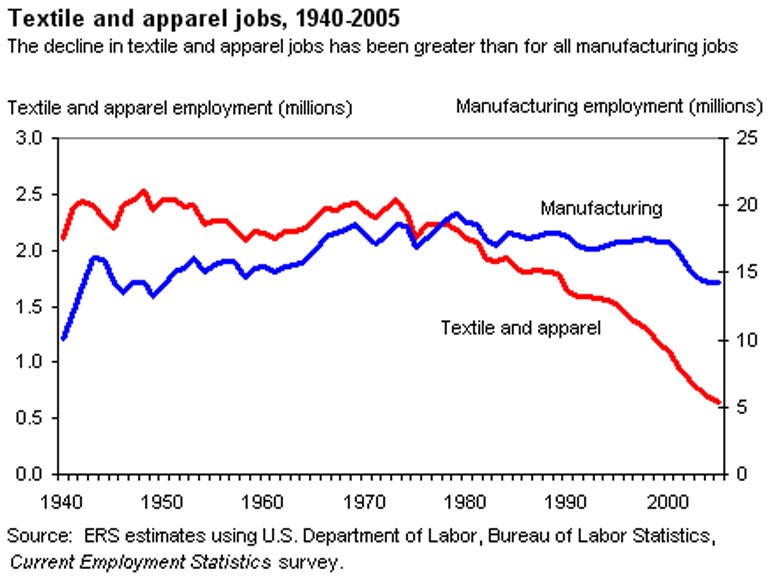
Now you might say, I don’t buy anything from them or any large clothing manufacturer that moved abroad, this still doesn’t affect me. But those large companies producing in the States really helps the little guys survive by subsidizing their manufacturing needs. When those systems disappear, domestically produced goods become even more expensive.
Our bastion of American selvedge, Cone Mills, isn’t kept alive by orders from Left Field, Rogue Territory, or Tellason, the White Oak Plant is but a small drop in the Cone Denim bucket. If there aren’t any “big players” making orders from White Oak, it won’t be feasible to keep it open.
Keeping a pool of skilled workers in your country also requires a thriving manufacturing industry to employ them. I don’t know if you’ve ever messed with a sewing machine, but it takes a great deal of time and practice to be able sew a sellable piece of clothing. As we’ve covered in the past, the people making the jeans for many of our favorite labels are largely holdovers from the days when the big brands kept their work in the States.
Those garment workers are getting older and there aren’t many ready to replace them–there are only so many Roy Slapers out there who can teach themselves. The only companies that can invest the time and money to create large numbers of skilled workers are the big ones with big enough overheads to stomach it. Right now they’re training workers where their factories are: Mexico, Egypt, Sri Lanka, the Dominican Republic, China, Bangladesh, etc.
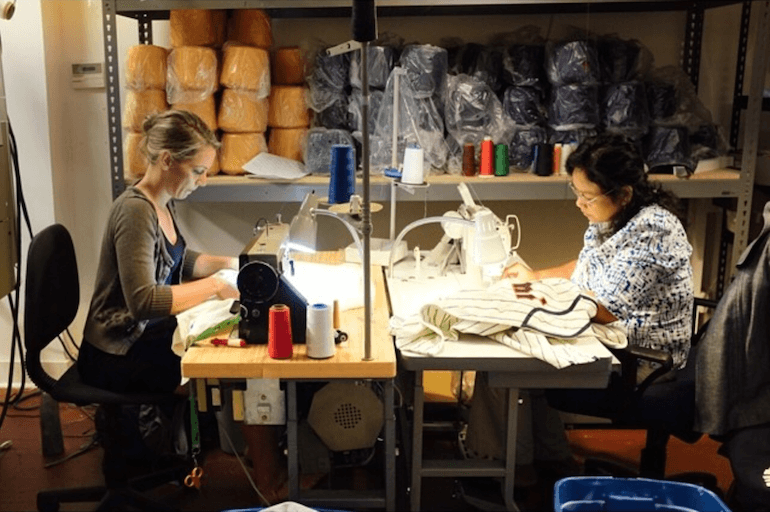
Workers sewing in Ebbets Field Flannels’s Seattle workshop.
Now to the current trade agreement on the table, the TPP. It’s difficult to get a read on what it will actually contain because trade talks are almost always conducted in secret, but the leaked drafts of the agreement suggest that it will extend many of those NAFTA-esque tariff reductions to those countries listed above, which would further cripple American manufacturing.
The Administration has claimed the agreement would “increase U.S. exports by $123 billion and help support an additional 650,000 jobs”, but the Washington Post has found that to be specious at best. This agreement would be great for many American businesses and stockholders, who would benefit from cheaper manufacturing, but disastrous for the American worker, who suddenly has to compete with his Vietnamese and Malaysian counterparts for a job.
And the money that does come in from this agreement is projected to only benefit the wealthiest 5% of Americans (you know, the people who can afford to build factories abroad). Everyone else’s wages are expected to dip significantly as their jobs leave the United States.
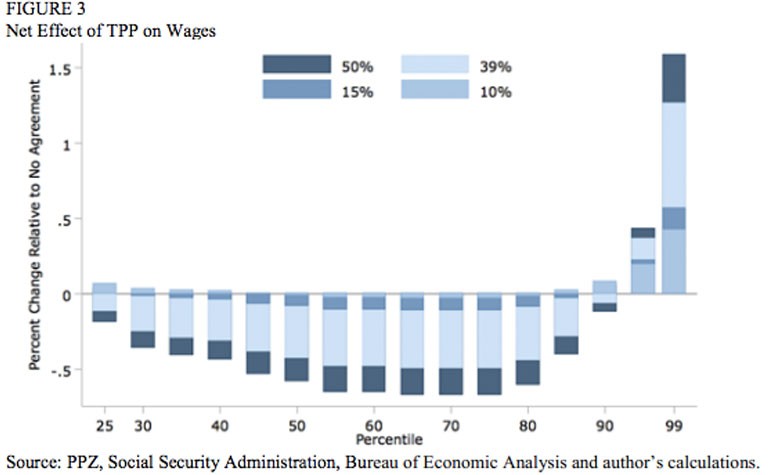
That’s not all, one particularly pernicious piece of the agreement suggests that it would override the Buy American Act. Since 1933, the BAA has mandated that the government prefer US produced goods in all federal purchases–highway bridges, Army tanks, TSA rubber gloves–some half a trillion tax dollars that gets recycled back into the American economy every year. The TPP would open that up to bids from any member nation, so not even the American government would be required to buy American.
So now that we know all these fun things about the TPP (not to mention the sections that overhaul copyright law and environmental protections), what’s next? The White House is currently trying to “fast-track” the TPP agreement to Congress, which means the legislature would only be able to vote yes or no rather than debate or amend any specific point. Oddly enough, the Republicans seem to be rallying behind Obama’s plan for the TPP while congressional Democrats are turning ranks. The Republicans hold a majority in both chambers and Obama won’t veto his own plan, so it’s poised to pass without much difficulty.
If you live in the United States and you care about domestically made product, consider contacting your representatives. If the Trans-Pacific Partnership passes, conditions for Made in USA product could get much, much worse.
What do you think about the Trans-Pacific Partnership and the way policy affects manufacturing? Let us know in the comments below!

